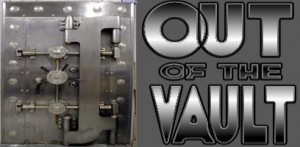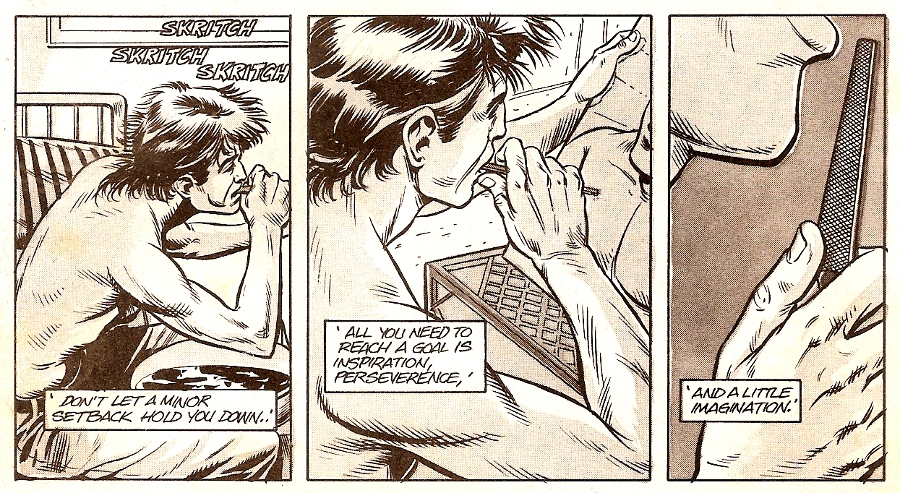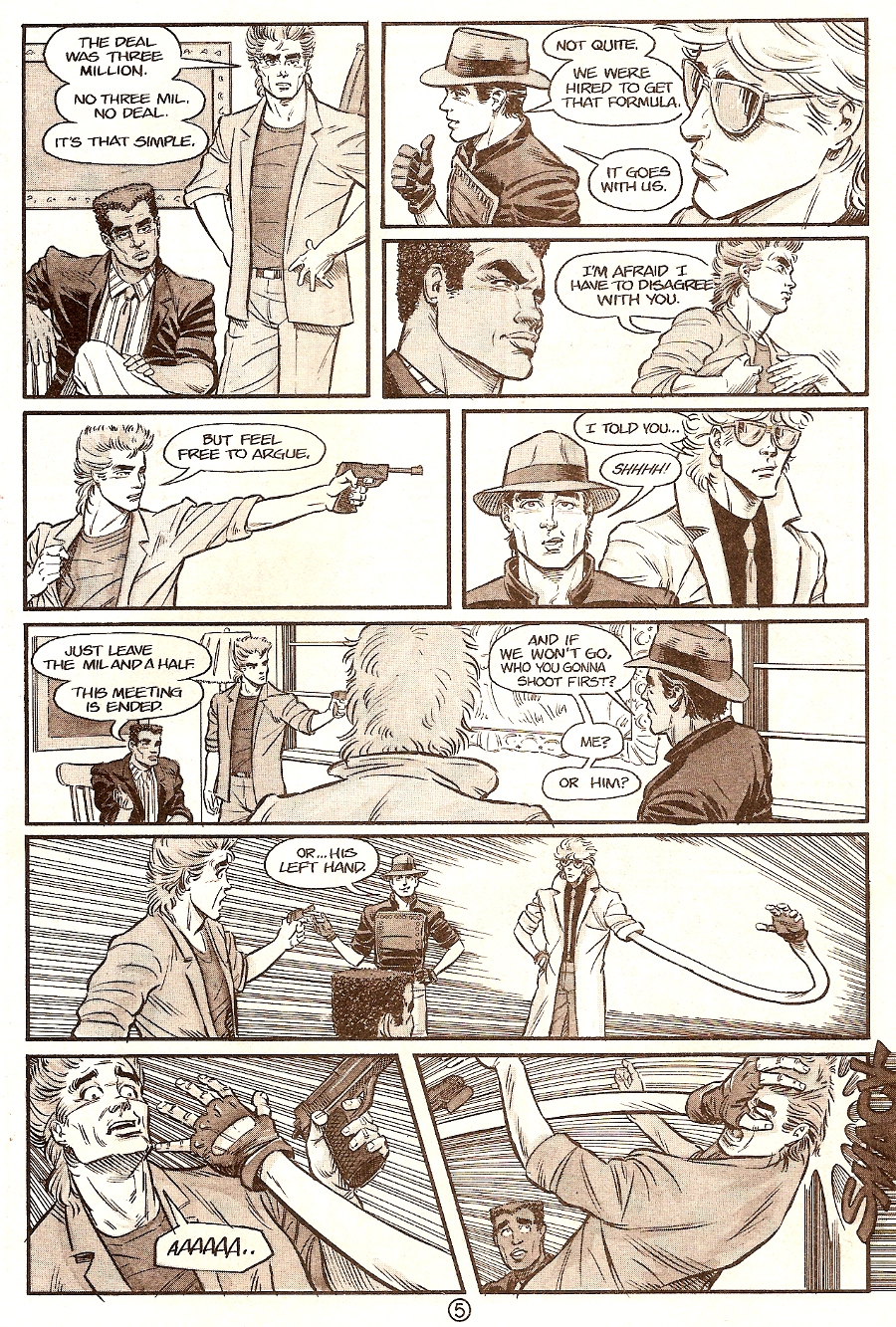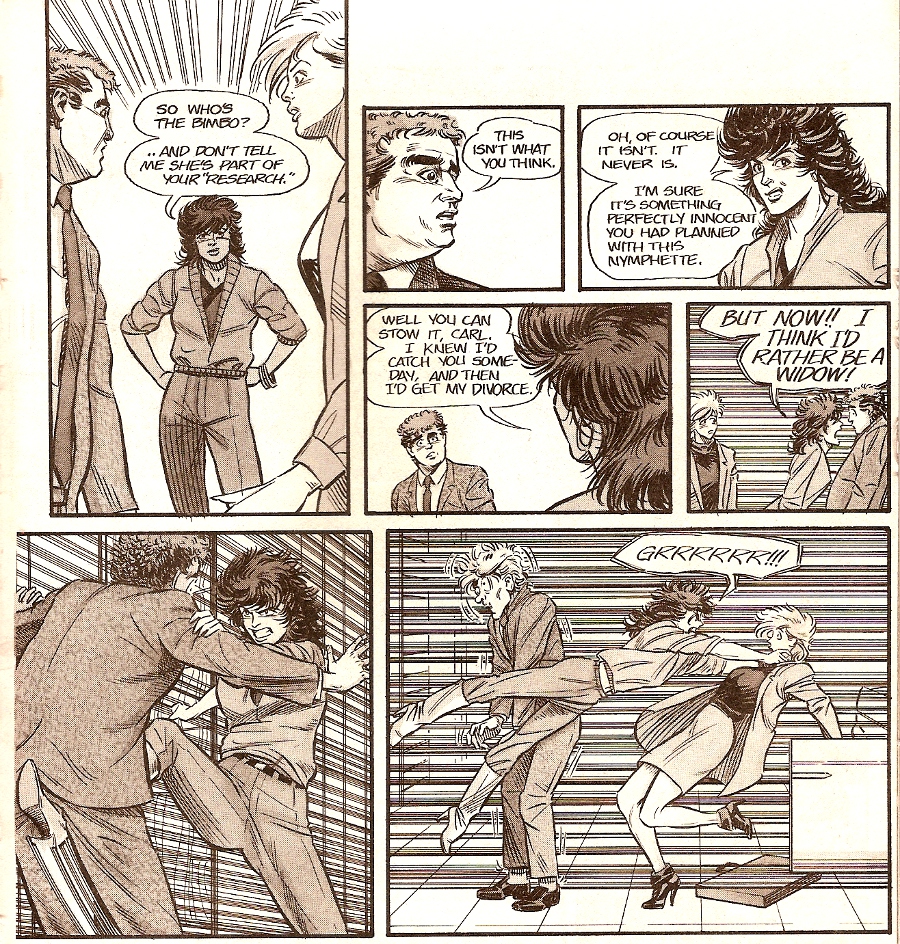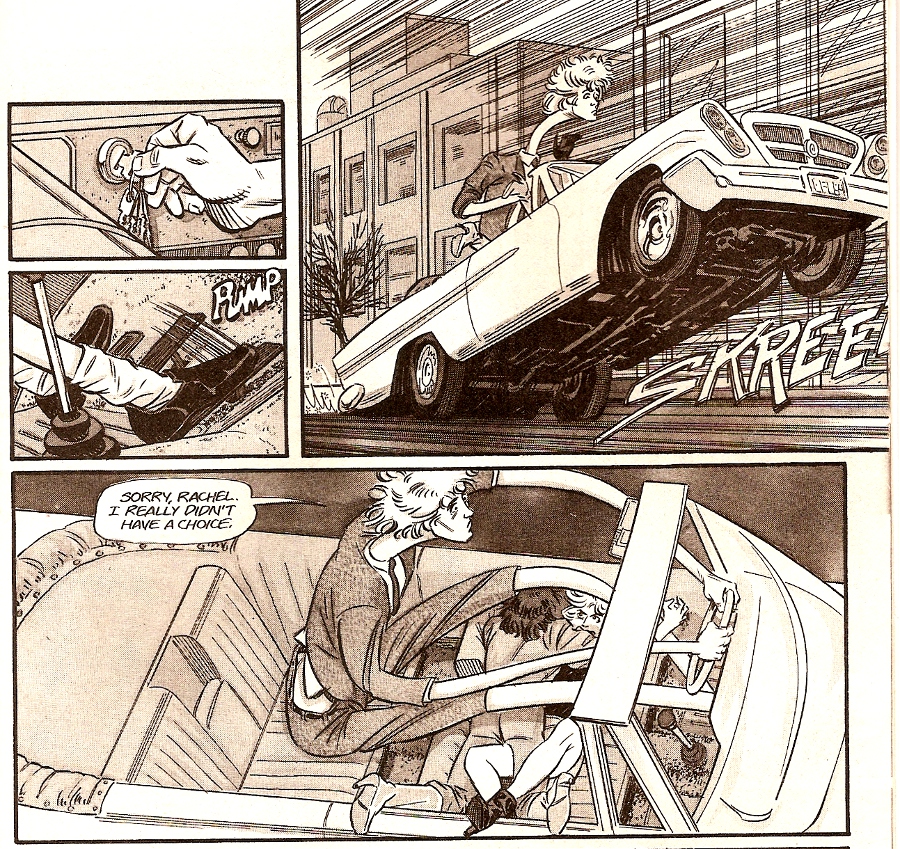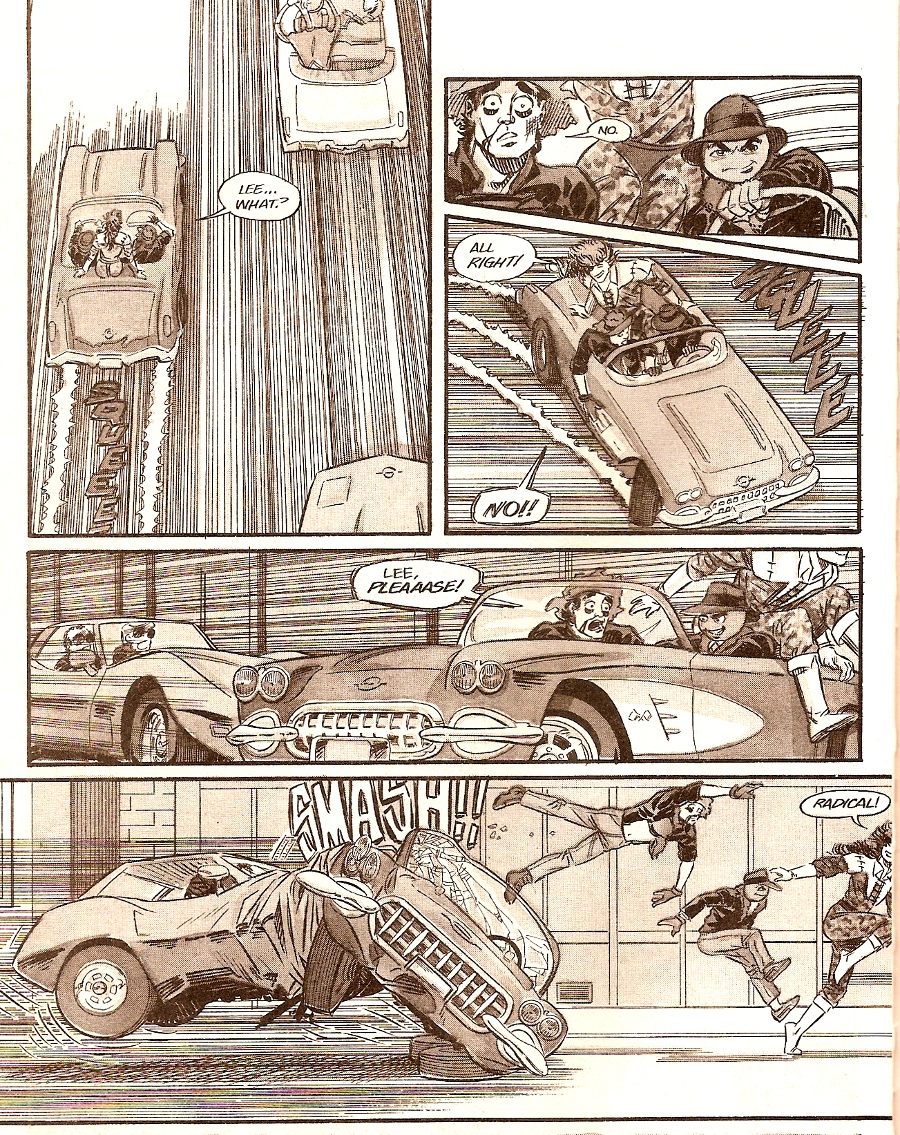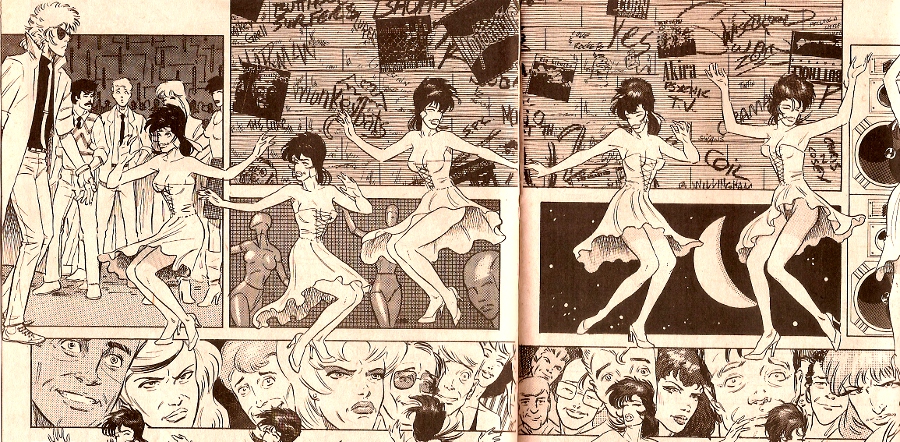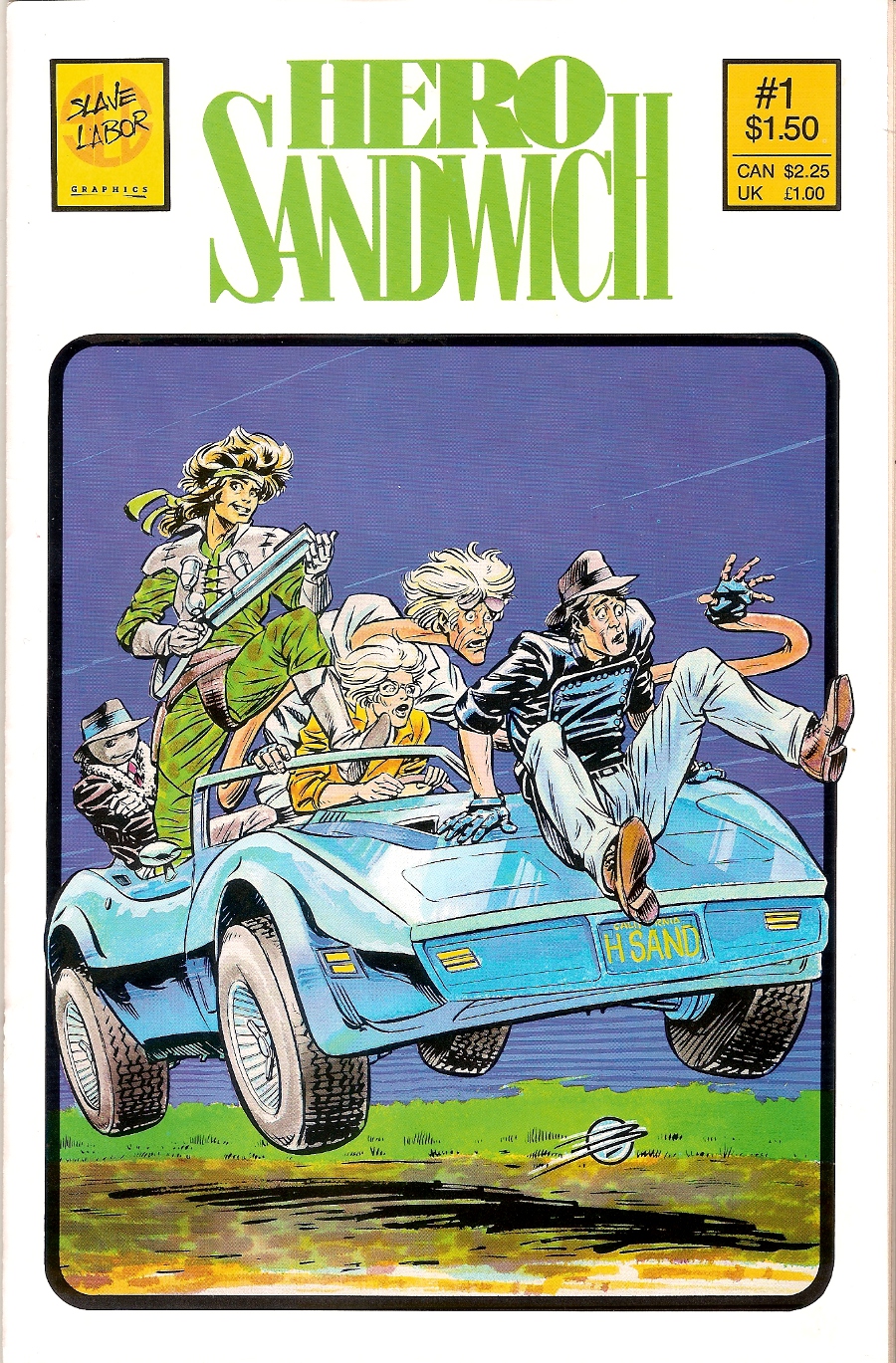 The mid- to late-1980’s saw a huge boom in independent comics, most of which fell into two camps: stuff that wasn’t very good (if at all) and stuff that was rough, but showed promise. Even the best or most successful of the independents, like Nexus or Mage or Teenage Mutant Ninja Turtles, had their growing pains. But very rarely, you got a first issue that was simply dazzling right out of the gate.
The mid- to late-1980’s saw a huge boom in independent comics, most of which fell into two camps: stuff that wasn’t very good (if at all) and stuff that was rough, but showed promise. Even the best or most successful of the independents, like Nexus or Mage or Teenage Mutant Ninja Turtles, had their growing pains. But very rarely, you got a first issue that was simply dazzling right out of the gate.
Case in point: Hero Sandwich, which debuted in February 1987 from Slave Labor Graphics. Written by Dan Vado (who would later write The Griffin) with art by Chuck Beckum (who had just left brief gigs on Alan Moore’s Miracleman and Mike Baron’s Badger), the first issue seemed almost like an action film come to life.
The issue opens with a man sitting in a filthy apartment–mattress on the floor, cardboard box for a table– looking at himself in a hand mirror while he brushes his teeth. Except that he’s not exactly brushing…
He has filed his teeth down to points, so that he smiles like a shark. And he uses those newly filed teeth to stalk a pretty coed out exercising with her Walkman.
Meanwhile, at the Hotel Reinhold (a shout-out to Badger artist Bill Reinhold, with whom Beckum had recently worked), there’s a meeting going down between a pair of drug dealer-types who bear a resemblance to Crockett and Tubbs from Miami Vice, and these two really weird guys.
The guy in the hat is Silver Scorpion, although he’s neither silver nor a scorpion. The stretchy guy is Richard. Scorpion runs into an old nemesis named Irving outside the room and stays to delay him while Richard takes off with the formula. Irving radios his teammates with Richard’s description before he and Scorpion throw down. Richard has the devil’s own time eluding the pursuit, with a little help from Scorpion after he has defeated Irving.
Little does Scorpion know that Richard has stolen the clothes (and briefcase, and shoes) from a short, dumpy businessman in the men’s room. He meets up with teammate Rachel outside to make his getaway, when they run into the businessman’s wife, who has followed her husband here, thinking he’s having an affair.
Irving’s teammates run outside to catch Richard, so he decides to take off. However, the girls are fighting in the front seat, so he has to improvise.
The bad guys give chase, and moments later, Scorpion shows up with the rest of the team, Allison and Lee. Scorpion tells Richard to block the road with Lee’s car, since they obviously can’t use Scorpion’s classic Corvette. Lee begs to differ.
They finally make it back to their office, with money and formula for their client, Mrs. Rolling, when they discover someone waiting in their office: a vampire, who has drained the blood of Mrs. Rolling’s representative.
Meanwhile, the guy with the filed teeth goes to confession, but rather than confess his sins, he kills the priest, just to prove he can.
To say I was psyched after reading the first issue is an understatement. The story moved at a perfect pace, introducing a formidable villain on the one hand, while introducing a quirky team of heroes on the other. There was action and humor in perfect balance, and Beckum’s art was brilliant.
On Miracleman, Beckum’s art had seemed stiff and forced, but in this book, he had managed to find a personal style that combined the kineticism of manga (check out all those manga-style speed lines) with absolutely American character design that seemed to combine the best of superhero and Archie comics. The layout and pacing were perfect, the action precisely rendered without seeming stiff. It wasn’t just amazing, but it seemed effortless, which is the real trick.
Meanwhile, Vado’s script had humor and drama and some wonderfully creepy atmosphere in the bad guy’s narration. We were left with no idea who all these main characters were, but damn, it was a fun ride, and surely once we learned the backstory, it could only get better.
Unfortunately, it was not to be. The initial storyline went by too quickly, and like Vado’s other major book, The Griffin, it moved in weird fits and starts, with lots of exposition followed by brief action, followed by more exposition. The initial storyline ended in issue four, with most of the mystery explained in dialogue by the vampire instead of being uncovered clue by clue, with half the team off somewhere else. And we never did learn much about the characters,
Issue 5 was a fill-in issue, written by the artist who, starting with issue 2, had changed his last name from Beckum to Austen (yes, that Chuck Austen). The story featured Richard, who was obviously Austen’s favorite character. We never did learn how Richard got his stretchy powers, but in issue three, we did learn that he had been a pop star by the name of Plasteeq (in a scene which not only foreshadowed Austen’s later porn work, but also featured shout-outs to fellow artists Mike Grell and Bill Willingham).
By the time issue #6 came out, in February 1989 (three years after issue #1), it was obvious that whatever potential Hero Sandwich had demonstrated in that first issue was not going to be realized. Not only had it never been able to maintain a schedule, but every issue had looked different, as Austen leaned more and more on art assistants (mainly Norman Felchle, who graduated to lead artist on The Griffin), and with issue 6, Austen was gone, replaced by Pete Krause.
Krause has since gone on to do big things at DC, but in 1989, his stiffly-rendered figures couldn’t hold a candle to the kinetic appeal of Austen’s work. Nor could he maintain a schedule any better than Austen (although, to be fair, I have no proof that it wasn’t Slave Labor that was at fault for the schedule–some of those independent publishers had pretty shaky finances).
Worst of all, the mix of humor and action was gone–in the two issues I have of Krause’s run, Richard doesn’t stretch once, and Allison–the female combat monster who played a decisive role in the first storyline’s climax–is a nonentity. Most of the emphasis is on team leader Rachel and Silver Scorpion.
Whatever the reason, Hero Sandwich limped through four more issues after Austen left before giving up the ghost. By that time, I’d stopped caring about it.
But damn, that first issue was freaking brilliant!

